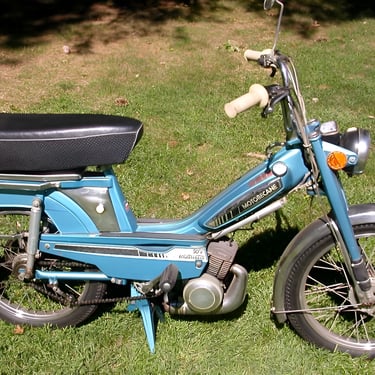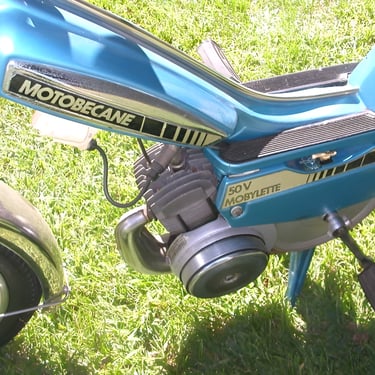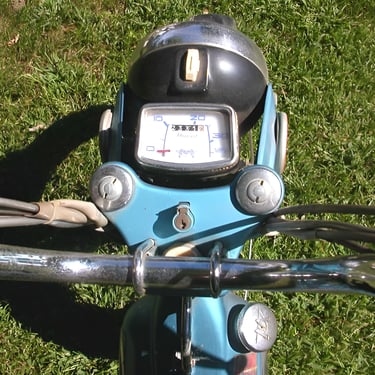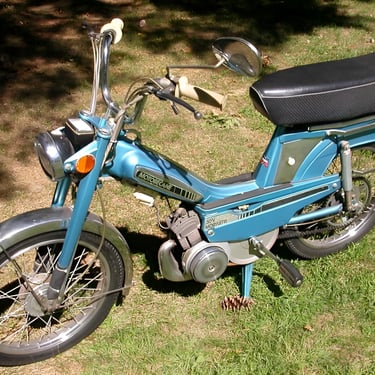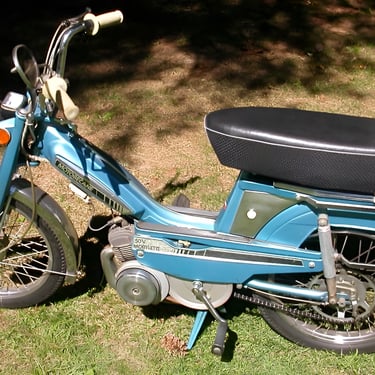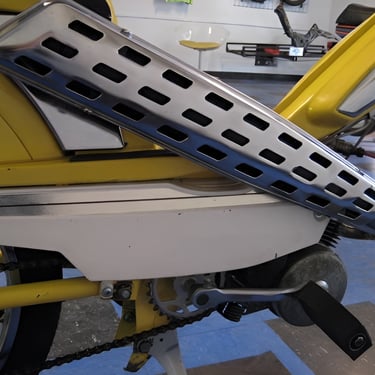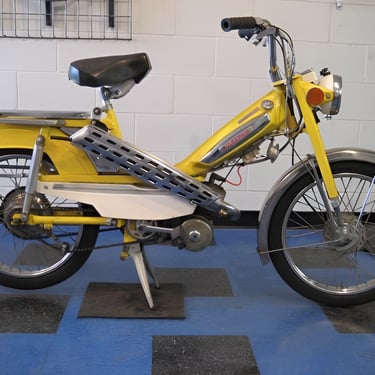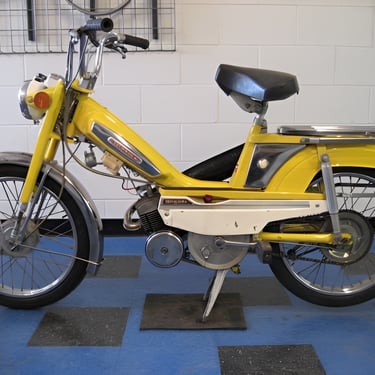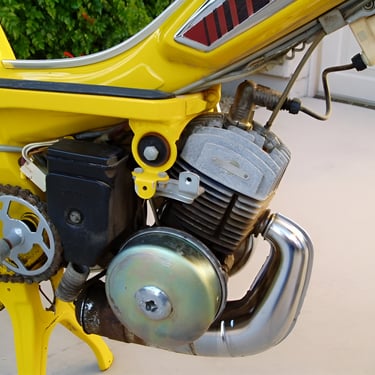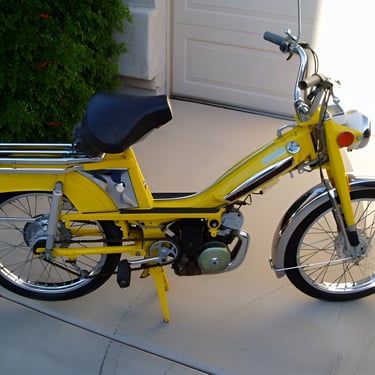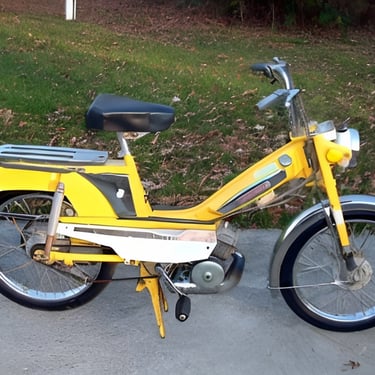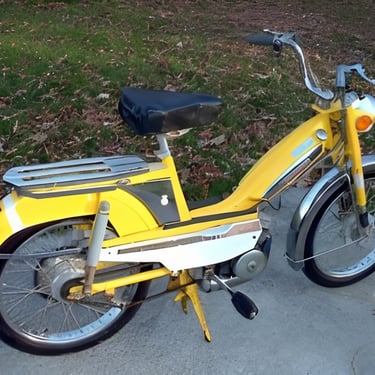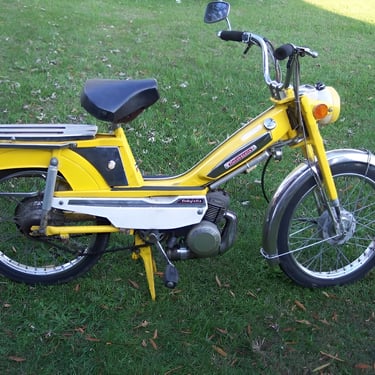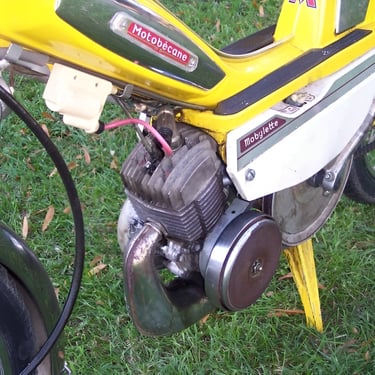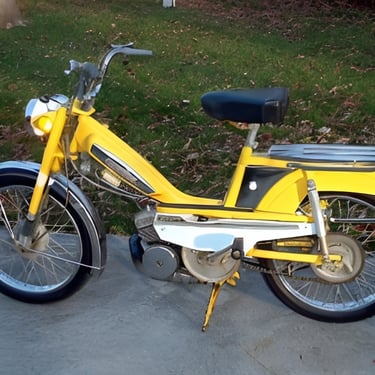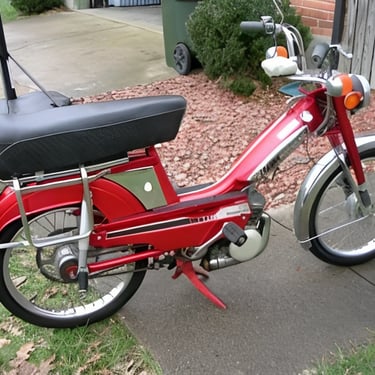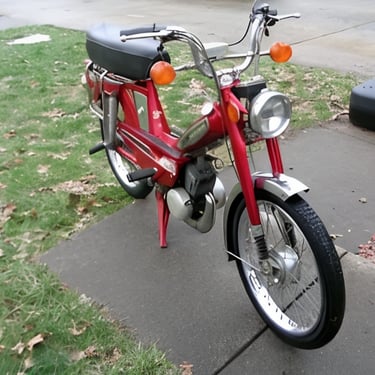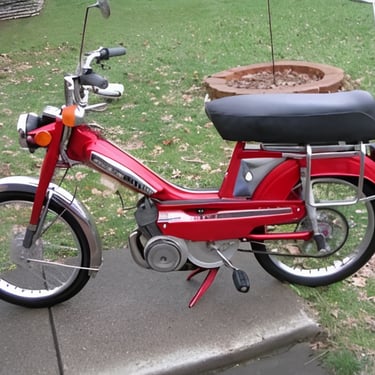From France with Love: The 1978 Motobecane 50V Revolution
The article provides a comprehensive review of the 1978 Motobecane 50V moped, a significant model in the history of European moped manufacturing.
TWO STROKE1970'SCLASSIC MOPEDSFRANCEMOTOBÉCANE
12/21/20244 min read
From France with Love: The 1978 Motobecane 50V Révolution
Introduction
The 1978 Motobecane 50V represents a significant milestone in the history of European moped manufacturing. As one of the most successful models from the renowned French manufacturer Motobécane, the 50V emerged during the peak of the global moped boom in the 1970s. This versatile two-wheeler combined the practicality of a bicycle with the convenience of motorized transportation, making it a popular choice for both urban commuters and suburban riders. The 50V model showcased Motobécane's engineering excellence and commitment to quality, characteristics that had defined the company since its establishment in 1923 by Charles Benoît and Abel Bardin.
Historical Context
Motobécane's journey to creating the 50V was rooted in decades of manufacturing excellence. Founded in Pantin, France, the company had established itself as a leading manufacturer of bicycles and motorized two-wheelers by the 1970s. The introduction of the Mobylette line in 1949 had already revolutionized personal transportation in post-war Europe, and the 50V represented the evolution of this successful formula.
The 1970s marked a significant period for moped popularity, driven by the global oil crisis and increasing urban congestion. In this context, the Motobecane 50V emerged as a perfect solution, offering excellent fuel economy and practical transportation. The model particularly resonated in both European and American markets, where rising fuel costs made efficient transportation increasingly attractive.
During this period, Motobecane's reputation for reliability and quality craftsmanship helped the 50V compete successfully against other prominent manufacturers like Puch and Peugeot. The company's strong dealer network and parts availability further contributed to its success in major markets.
Technical Specifications
The 1978 Motobecane 50V was equipped with several technical innovations that set it apart from its competitors. At its heart was the reliable AV series engine, a 49.9cc two-stroke power plant that represented an evolution in Motobecane's engine design. The engine featured case reed induction, where the carburetor fed directly into the crankcase, improving both power delivery and fuel efficiency.
A significant technical update for the 1978 model year was the transition from 6-volt to 12-volt electrical systems, which provided more reliable starting and better lighting performance. The electrical system included a generator for charging the battery and powering the lights, making the 50V suitable for both day and night operation.
The frame was constructed from robust tubular steel, designed to provide both strength and reasonable weight distribution. The suspension system featured telescopic front forks and dual rear shock absorbers, offering a comfortable ride over varying road conditions. The braking system combined a front drum brake with a rear drum brake, providing adequate stopping power for the moped's modest speed capabilities.
The transmission utilized an automatic centrifugal clutch coupled with a variable diameter engine pulley, allowing for smooth, twist-and-go operation that made the 50V particularly accessible to novice riders. This system eliminated the need for manual gear changes while still providing efficient power transfer across different speeds.
Design and Features
The 1978 Motobecane 50V showcased a thoughtful blend of form and function in its design. The model featured clean, practical lines that reflected the utilitarian nature of European mopeds while maintaining an aesthetic appeal that has stood the test of time. The stepped seat design provided comfortable seating for both solo and occasional two-up riding, while the wide handlebars offered excellent control and maneuverability.
Notable design features included the distinctive chrome-plated fuel tank with characteristic Motobecane badging, complemented by matching chrome fenders that added both style and practicality. The pedals, a legal requirement in many jurisdictions, were efficiently integrated into the overall design without compromising the moped's motorized character.
The 50V included several practical features that enhanced its everyday usability. A sturdy rear rack came standard, providing valuable cargo capacity for commuting and shopping trips. The lighting system was comprehensive for its era, featuring a headlight, taillight, and turn signals, making it fully road-legal and safe for street use. The instrument panel, while simple, provided essential information including speed and various indicator lights.
Performance and Riding Experience
The Motobecane 50V delivered performance that perfectly matched its intended use as an efficient urban transport solution. With a top speed of approximately 30-35 mph (48-56 km/h), it provided adequate velocity for city streets and suburban roads while maintaining impressive fuel economy, typically achieving around 100 miles per gallon under normal riding conditions.
The riding experience was characterized by smooth power delivery thanks to the automatic transmission system. The engine's power band was well-suited to urban riding, providing good acceleration from a stop and maintaining comfortable cruising speeds. The combination of the sturdy frame and suspension system resulted in stable handling characteristics, particularly important for newer riders.
While not designed for high-performance riding, the 50V's lightweight construction and balanced weight distribution made it notably agile in urban traffic. The seating position was upright and comfortable, reducing rider fatigue during longer trips, while the pedals provided backup power when needed or desired.
Legacy and Collectibility
The Motobecane 50V has left an indelible mark on moped culture and continues to be highly regarded in collecting circles. Its influence extends beyond its era, serving as a benchmark for reliable, practical moped design. The model's success helped establish Motobecane as a leading manufacturer in the moped segment throughout the 1970s and early 1980s.
Today, the 1978 50V holds particular appeal among vintage moped enthusiasts and collectors. Well-preserved examples can command significant prices in the collector market, especially those with original components and documentation. The model's enduring popularity is supported by a robust community of enthusiasts and a reasonable availability of both original and reproduction parts.
Maintenance and restoration of the 50V is relatively straightforward, thanks to its simple mechanical design and the availability of technical documentation. Many owners' groups and online communities provide valuable support for maintenance and repairs, helping to keep these classic machines on the road. This accessibility, combined with the model's historical significance and practical usability, ensures that the Motobecane 50V remains a sought-after classic in the vintage moped market.
